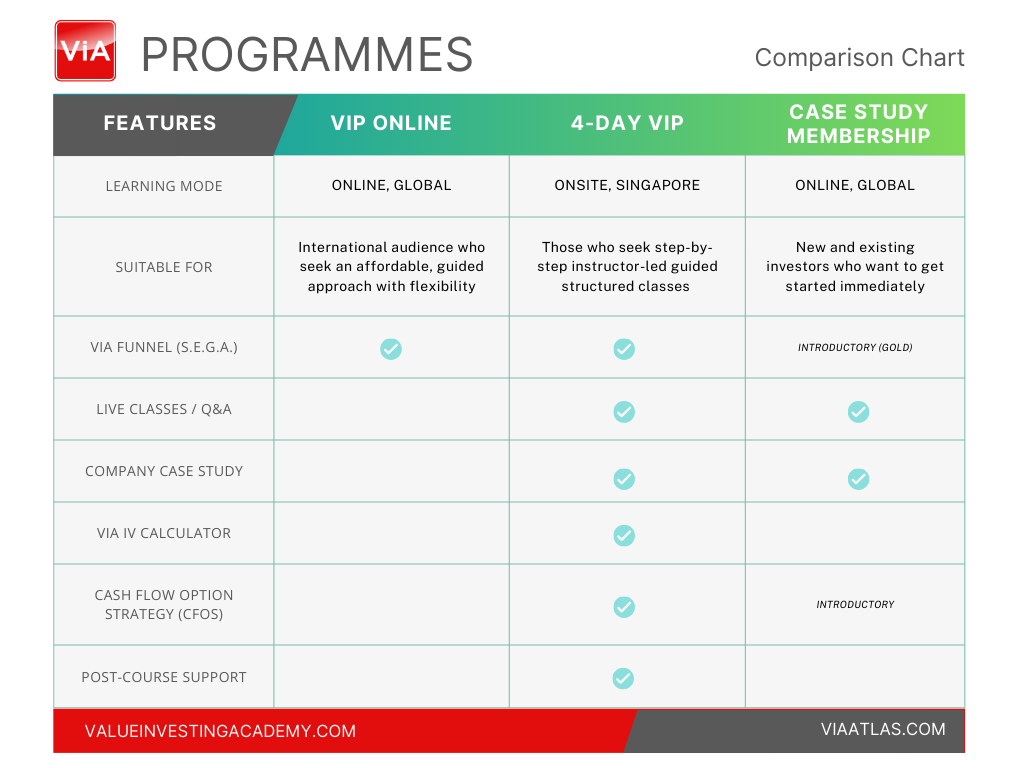Value Investing Psychology: Overcoming Emotional Biases
Share this article
In the world of investing, our emotions often play a more significant role than we'd like to admit. Fear can drive us to sell at market bottoms, while greed might push us to buy at peaks. Despite our best intentions to make rational decisions, psychological biases frequently interfere with our investment goals. Value investing—a strategy focused on buying undervalued assets—offers a disciplined framework to combat these emotional pitfalls. However, even the most dedicated value investors must recognize and overcome their psychological biases to succeed.
The Intersection of Behavioral Finance and Value Investing
Behavioral finance studies how psychological and emotional factors influence financial decisions. Traditional finance assumes that investors are rational, making logical choices based on all available information. However, behavioral finance recognizes that human beings are prone to biases and emotions that can distort their decision-making process.
Value investing, pioneered by Benjamin Graham and David Dodd in 1934, focuses on identifying and purchasing securities trading below their intrinsic value. This approach is fundamentally tied to overcoming behavioral biases, as it requires investors to act contrary to market sentiment—buying undervalued assets when others are fearful and maintaining discipline when others are greedy.
Common Emotional Biases That Derail Investors
Understanding the psychological biases that affect investment decisions is the first step toward overcoming them. Several prominent biases regularly impact investors:
Fear and Greed: The Primary Emotions
Fear and greed are two of the most powerful emotions that significantly influence investment decisions, often leading investors to buy or sell at the wrong time. During market downturns, fear can cause investors to panic and sell off assets at a loss, even when most of the conditions that motivated the investment initially remain solid. Conversely, greed drives investors to take unnecessary risks, especially during bullish markets, pushing them to buy overvalued stocks in the hope of quick profits.
Loss Aversion: The Pain of Losing
Loss aversion describes our tendency to feel the pain of losses more intensely than the pleasure of equivalent gains. Research shows that investors are generally more sensitive to losses than to equivalent gains. This bias can lead to premature selling of losing investments and holding onto winning investments for too long.
Anchoring Bias: Fixating on Initial Information
Anchoring bias occurs when investors fixate on an initial piece of information, such as a stock's price when they first purchased it, and make subsequent decisions based on this reference point, regardless of changing market conditions. This can prevent investors from objectively assessing a company's current value.
Herd Mentality: Following the Crowd
Our cavemen ancestry as hunters and gatherers with the herd mentality of safety in numbers worked in their favor then. But it is usually not so in today's investing world. Some investors take comfort when observing that many others are piling into an investment, so they follow the herd without doing careful research first or assessing if the investment suits them9. This behavior can lead to market bubbles and subsequent crashes.
Overconfidence Bias: Overestimating Our Abilities
Overconfidence bias is the natural human tendency to overestimate our abilities. This tendency has been well established in scientific research, including a 2020 study published in the American Psychological Association Journal, which confirmed the better-than-average effect—the tendency for people to consistently perceive their abilities, attributes, and personality traits as superior compared with their average peer. In investing, this can lead to excessive trading and inadequate diversification.
Why Value Investing Helps Combat Emotional Biases
Value investing is a time-tested, viable strategy that history has shown can help investors avoid some of these behavioral biases, using an objective approach. Here's how it helps:
Objective Valuation Over Emotional Reactions
Value investing focuses on determining a company's intrinsic value based on fundamental factors like earnings, assets, and cash flow. By establishing clear valuation criteria, value investors can make decisions based on objective analysis rather than emotional reactions to market movements.
Long-Term Perspective Over Short-Term Noise
Value investing requires patience—sometimes years—for the market to recognize a stock's true value. This long-term perspective helps investors avoid reacting to short-term market fluctuations and news cycles that might otherwise trigger emotional responses.
Contrarian Approach Counters Herd Behavior
Value investors often buy when others are selling and exhibit caution when markets appear euphoric. This contrarian stance naturally counters the herd mentality bias. Research has found a positive relation between the value premium and stock market sentiment: while growth investing can be relatively dominant in a pessimistic cycle under depressed investor sentiment, value strategy can outperform in an optimistic period.
Practical Strategies for Developing Emotional Discipline
Emotional discipline in investing refers to the ability to manage and control one's emotions when making investment decisions. This discipline is crucial because emotions like fear and greed can lead to irrational decisions, which can negatively impact investment outcomes5. Here are practical strategies to develop this discipline:
Implement a Systematic Investment Process
Creating a systematic investment process with clear criteria for buying and selling can help remove emotional decision-making. Document your investment thesis for each position, including the reasons for buying and the conditions under which you would sell.
Practice Awareness of Your Biases
The first step in overcoming biases is recognizing them. Pay attention to emotional reactions during market volatility and question whether your instincts align with your investment strategy. Being aware of investor biases can help us make less emotional decisions and better choices.
Conduct Pre-Mortem Analysis
Before making an investment, imagine it has failed and analyze what might have gone wrong. This exercise helps identify potential blind spots in your analysis and prepares you emotionally for various outcomes.
Maintain a Decision Journal
Keep a record of investment decisions, including the rationale behind each move and your emotional state at the time. Reviewing this journal periodically can reveal patterns in your decision-making and help identify recurring emotional biases.
Focus on Process Over Outcomes
Sometimes good decisions lead to bad outcomes due to unpredictable factors. Rather than judging yourself solely on results, evaluate whether you followed your investment process correctly. This approach helps maintain discipline even when faced with short-term losses.
Diversify Appropriately
Proper diversification can reduce the emotional impact of individual investment losses. By spreading risk across various assets, sectors, and geographies, you'll be less likely to make emotional decisions based on the performance of a single position.
Learning From Famous Investors' Mistakes
Understanding emotional biases and developing strategies to overcome them is essential for successful value investing. By combining the objective approach of value investing with awareness of psychological pitfalls, investors can make more rational decisions aligned with their long-term goals.
Remember that overcoming emotional biases is an ongoing process, not a one-time achievement. Even experienced investors must regularly check their emotional responses and realign with their investment principles. As Warren Buffett famously said, "The most important quality for an investor is temperament, not intellect."
By focusing on fundamental analysis, maintaining a long-term perspective, and developing emotional discipline, value investors can navigate market volatility with confidence and potentially achieve superior returns over time. The ability to remain rational when others are not is perhaps the greatest advantage a value investor can possess in today's emotionally driven markets.
See Value Investing in Action
Presented by Cayden Chang
Founder of Value Investing Academy and Award-Winning International Speaker, Lifelong Learner Award 2008, Personal Brand Award 2017
You will learn:
- A deep dive into a fast-growth company case study.
- The key financial metrics used when evaluating whether a stock has strong growth potential
- Step-by-step guide on how to apply the Value Investing Methodology on real-life companies
- The exact criteria that successful investors use when evaluating any company
- How to determine the intrinsic value of a stock so you will know exactly when to enter or exit the market
- How ViA Atlas Intrinsic Value (IV) Directory can get you started on building your own portfolio of superhero stocks, even for busy professionals without much time to spare.
Click the button below to reserve your spot now.

Suitable For
Solutions For
Mind Kinesis Investments Pte Ltd. All Rights Reserved.
Investify Symposium 2024
Upon registration, you will receive a URL to claim your webinar access pass.
Robert G Allen

Through the past 40 years, MILLIONS of people have attended his live seminars and his graduates have earned BILLIONS in profits by following his financial advice. Today there are literally thousands of millionaires and multi-millionaires worldwide who attribute their success to Mr. Allen’s systems and strategies. Empowered by his philosophy of the Enlightened Entrepreneur, his students have generously contributed over 50 million dollars to their favorite churches, causes and charities.
As a public speaker, he has spoken to audiences worldwide as large as 20,000 people, sharing stages with the likes of Sir Richard Branson, Tony Robbins, Robert Kiyosaki, Oprah Winfrey, Prime Minister Tony Blair and Donald Trump. In America, the National Speaker Association gave him an award as America's Top Millionaire Maker.
As a trainer and educator, he has spoken to groups all over the world from United States, Singapore, Mexico, Canada, South Africa, Russia, Kazakhstan, Latvia, Slovenia, Australia, Italy, England, Japan, Taiwan, Hong Kong and China. He teaches on the subjects of personal finance, wealth creation, multiple streams of income, entrepreneurship, authorship, sales, marketing and personal growth.
He is a popular media guest appearing on hundreds of radio and television programs including Good Morning America, Regis Philbin, Neil Cavuto and Larry King. He has been the subject in numerous international publications including the Wall Street Journal, The Los Angeles Times, The Washington Post, Newsweek, Barons, Redbook, Money Magazine and The Reader Digest to name just a few.
Ernee Ong

Ernee Ong is the co-founder of Proptiply, a property consulting and investment education company that builds on the concept of co-living to generate rental income. He aims to educate and empower aspiring property investors to attain their life goals through prudent and sound property investing principles.
Ernee is a loving husband to Jelene and a father to two wonderful daughters. Alongside Jelene, he is a co-founder and the driving force behind Proptiply™.
Proptiply™is a Property Education Company that empowers students with a focus on teaching them how to build cashflow by leveraging other people's resources and scaling up. Ernee has achieved remarkable success, moving from living in a 3-room HDB flat to owning a landed property and acquiring an additional one.
Ernee will be sharing insights into how individual Singaporeans or Permanent Residents (PRs) can scale up their property portfolio even with limited resources. His journey has been featured in prestigious media outlets like CNA, the South China Morning Post, and other news channels, showcasing how he managed to build an 8-figure business while overseeing 300+ properties in Singapore.
Vincent Chua

Vincent is a financial planner who specializes in investment and retirement planning. He helps people achieve their financial goals and dreams through comprehensive and customized solutions.
He has nearly a decade of experience in the financial services industry and is a Certified Financial Planner, CFP®. He is passionate about educating people on the importance and relevance of financial planning in today's world.
He grew up in Toa Payoh, a mature estate in Singapore, witnessing many senior citizens struggle with health and financial issues. They often told him that "it's better to be dead than to be sick in Singapore". This made him realize the value of money and motivated him to learn about investments at a young age. Later, he discovered the financial planning industry and decided to pursue it as a career.
He loves what he does because he makes a positive difference in people's lives. Whether it's helping them grow their wealth, protect their income, or plan for retirement, he enjoys seeing them achieve their desired outcomes and live their best lives.
Self-made Millionaire Investor
Liu Feng

Liu Feng graduated from Beijing University and came to Singapore in 1994, and went from having a mere S$100 in his wallet to becoming a millionaire. Armed with a strong determination, he made the majority of his fortune through Value Investing using principles created by Warren Buffett, one of the richest man in the world. Across the years, he has accumulated extensive experience and in-depth knowledge in stock investing.
Liu Feng specialized in stock investment. Since he first read a book about Warren Buffet in 1996, he has since done extensive studies on Value Investing Gurus – Benjamin Graham, Philip Fisher, Peter Lynch and John Neff. Through continuously fine-tuning his investment model, combined with his investment experience, he has founded a set of Investment Philosophies, Value Investing Principles and Methodologies to create passive income. Those who have been taught by him have found his teaching easy to understand as well as benefited from his many years of experience and insight on stock investments.
As an experienced value investor, Liu Feng incorporates real case studies of numerous Singapore-listed companies in his training, coupled with a systematic and proven methodology to provide a distinct advantage in the stock market.
Lauren C Templeton

Lauren C. Templeton is the founder and Chief Executive Officer of Templeton & Phillips Capital Management, LLC. Prior to founding the firm in 2001, Lauren was employed with Morgan Stanley, Homrich Berg, and New Providence Advisors, a hedge fund management company, based in Atlanta, GA.
“Author of “Investing the Templeton Way: the Market Beating Strategies of Value Investing's Legendary Bargain Hunter”, Lauren is also the great niece of Sir John M. Templeton and is a current member of the John M. Templeton Foundation, established in 1987 by renowned international investor, Sir John Templeton. She began investing as a child under the heavy influence of her father as well as her late great-uncle, Sir John Templeton.
About Sir John Templeton
Sir John Marks Templeton was born in 1912, in the small town of Winchester, Tennessee. He attended Yale University and graduated near the top of his class and as President of Phi Beta Kappa. He was named a Rhodes Scholar to Balliol College at Oxford, from which he graduated with a degree in law.
Templeton started his Wall Street career in 1938 and went on to create some of the world’s largest and most successful international investment funds. He was famous for picking companies that hit “points of maximum pessimism” (ie. Rock bottom prices). When war began in Europe in 1939, he borrowed money to buy 100 shares each in 104 companies selling at one dollar per share or less, including 34 companies that were in bankruptcy. Only four turned out to be worthless, and he turned large profits on the others.
Templeton established the Templeton Growth Fund in 1954. With dividends reinvested, each $10,000 invested in the Templeton Growth Fund Class A at its inception would have grown to $2 million by 1992. He eventually sold the family of Templeton Funds to the Franklin Group — scores of them with $13 billion in assets — in 1992, and turned to philanthropies that had engaged him for decades.
Investing the Templeton Way Podcast
Investing the Templeton Way with Lauren Templeton is a podcast that explores the world’s most intriguing investment topics from the overseas markets to mastering our own minds. Gather investment wisdom and educate yourself as you listen to interviews with exclusive managers, executives, and entrepreneurs on a wide range of engaging topics. Visit the Podcast Page.
Dr Todd A Finkle

Todd A. Finkle, Ph.D. is the Pigott Professor of Entrepreneurship at Gonzaga University. He has taught for 34 years at 4 different universities, publishing more than 270 articles, books, presentations, and grants.
Dr. Finkle is an expert on Warren Buffett and Entrepreneurship. His recent book titled," Warren Buffett: Investor and Entrepreneur," is published by Columbia University Press. The book traces the entrepreneurial paths that shaped Buffett’s career, from selling gum door-to-door during childhood to forming Berkshire Hathaway and developing it into a global conglomerate through the imaginative deployment of financial instruments and creative deal making.
Dr. Finkle's initial motivation for writing the book was to show the layperson how Buffett evaluates potential investments. Finkle also zeros in on Buffett’s longtime business partner Charlie Munger and his contributions to Berkshire Hathaway's success. Finkle draws key lessons from Buffett’s mistakes as well as his successes, using these failures to explore the ways behavioral biases can affect investors and how to overcome them.
Dr. Finkle is a pioneer and innovator in the field of entrepreneurship education. He has been an entrepreneur of six ventures and consulted with a wide variety of entities including countries and universities from all over the world. Dr. Finkle has been interviewed or appeared in a variety of media outlets including the Cleveland Plain Dealer, Entrepreneur Magazine, Forbes Magazine, Omaha World Herald, Wall Street Journal, The Washington Post, and several radio and television stations.
Cayden Chang

Cayden Chang is the Founder of Mind Kinesis Investments Pte Ltd and Value Investing Academy Pte Ltd, which runs the first and only Value Investing training that is recommended and endorsed by Mary Buffett, the internationally acclaimed author and speaker of how billionaire Warren Buffett invests. His company also runs Value Investing workshops across Asia. With over 50,000 graduates across 11 cities in Asia, his methodology is tested, proven and easily duplicable even for someone who has no prior experience in investing.
Cayden holds two Bachelors’ Degrees and a Masters Degree from National University of Singapore. He has also been trained in value investing by Professor Bruce Greenwald in Columbia University, the institution where Billionaire investor Warren Buffett met Professor Benjamin Graham, as well as by Professor George Athanassakos, the finance professor who holds the Ben Graham Chair in Value Investing at the Richard lvey School of Business, University of Western Ontario.
Cayden has also received the Lifelong Learners Award 2008 from the Minister of Manpower on 18 November 2008, Mr Gan Kim Yong and he was featured in “TODAY” newspaper, “938Live Online News”, “938Live Radio Station”, “Mediacorp Xin.Sg” and “The Straits Times”. He was subsequently featured in “938Live Breakfast Club” Radio, “Channel News Asia AM Live”, “Shareinvestment”, “The Edge”, and “The Exquisite” Magazine for sharing his secrets of financial success.
In July 2010, he was diagnosed with Renal Cancer. Despite being ill, he launched his first charity project in August 2010, where he donated all of the sales proceeds of his book to The Straits Times School Pocket Money Fund, and was featured on 938 Live Radio Station and The Straits Times. His fight with Renal Cancer was subsequently published in The Straits Times and interviewed on 938Live Radio Station. His life story was featured in The Sunday Times on 10 June 2012. He survived terminal stage Renal Cancer (Stage 4) in September 2014 and launched his second book titled “The Book of Hope” to raise funds for cancer research.



